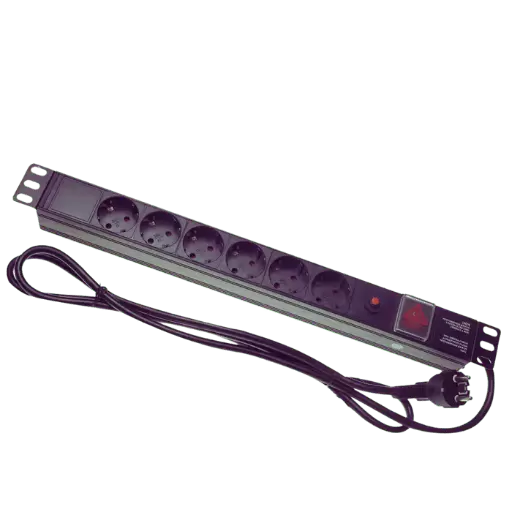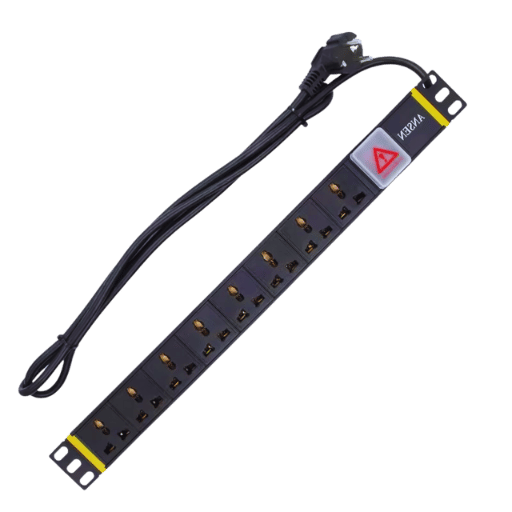In a world where information is everything, it’s incredibly important to have a stable power source within server racks. A data center or IT environment cannot function without one. This article will teach you about Rack Power Distribution Units (PDUs), what they are, and how they work so that you can make an educated decision about which type of PDU is best suited for your needs. You’ll learn about all different kinds of PDUs, their key features as well as what should be taken into consideration during the selection process – this guide covers everything from top to bottom! With knowledge like this under our belt, we’re able not only to optimize power management but also improve energy utilization efficiency, thus ensuring continuous operation even in cases where some parts fail at once due to electricity consumption exceeding allowable limits somewhere down the line. So, if you’re planning on upgrading or installing new infrastructure, then keep reading because here comes everything necessary!

A Power Distribution Unit (PDU) is an appliance made for transmitting electrical energy to numerous devices within the server rack. It acts as an important part in data centers, which guarantees continuous and reliable power supply from a rack mount PDU to servers and networking devices. PDUs are available in different setups such as basic, metered, switched etc., whereby monitoring and management capabilities may vary at each configuration level.

Compliance & Safety: Make sure PDU complies with industry standards/regulations.
When comparing Basic PDUs to Managed PDUs, it is important to understand what your data center or server room needs in order to utilize power strips most effectively. Basic PDUs provide simple power distribution, ensuring devices receive the required supply from a basic rack without any complicated setup. They tend to be cost-effective and reliable but lack advanced features like power monitoring or remote management. On the other hand, managed PDU comes with more advanced features such as real-time power usage monitoring, remote power cycling, plus environmental sensors, among others. They offer finer-grained control over individual outlets, allowing for remote on/off switching, which can be critical during troubleshooting or maintaining uptime. Furthermore, they give detailed insights into energy consumption patterns, thus enabling proactive energy management and optimization. Basically, basic PDUs fit where simplicity is key alongside saving money, while managed PDUs suit those setups that call for increased monitoring, control as well and operational efficiency enhancement.
Understanding specific requirements concerning how electricity should flow through your data center is crucial to achieving the best performance levels coupled with reliability. Start by finding out what amount of electricity each device consumes on average (this can be gotten by summing up rated draws usually given in watts/kilowatts). It’s also good practice to consider peak demands when calculating power consumption, plus having an allowance for unforeseen surges.
The next step involves looking into distribution: how should different outlets receive power? This may involve a number of phases utilized during distribution, types/number of outlets required, and ensuring that there is enough backup in cases where maintenance operations are being carried out or systems fail. The type of PDU configuration one deploys greatly determines the efficiency together with the robustness of the power delivery system; thus, selecting the right setup remains critical. One can opt for simple daisy-chaining if dealing with less critical environments or complex setups involving multiple Managed PDUs for wide-ranging monitoring as well as control purposes. Following these steps will enable the establishment of a strong electricity backbone tailored around what you do best while keeping pace with demand.

Surge protectors and circuit breakers are vital in Rackmount PDUs to protect data center equipment. These appliances conserve their durability and operational performance by averting voltage spikes that could lead to damage. Conversely, when an overload or short circuit is identified, circuit breakers disconnect the power automatically, thereby reducing fire hazards and equipment loss. It is necessary to apply this technology since it will prevent electric anomalies from damaging sensitive electronic parts, which enhances reliability throughout your data center setup.
Metered power distribution units provide accurate readings on energy consumption, enabling efficient load balancing and capacity planning. This helps one know where there might be potential problems with electricity before they become serious, thus increasing operational dependability. Another advantage is that these devices save money through the optimization of power usage while at the same time improving energy efficiency. They can be integrated into your infrastructure to allow for improved management of electricity distribution, which supports performance goals within a facility.
High-density models, together with those rated at 30A, greatly boost productivity by delivering more power distribution capability within a limited space. The consolidation reduces the number of required PDUs thereby simplifying cable organization as well as saving rack real estate. In addition, higher current loads are supported by 30A-rated models, hence allowing improved resource utilization with fewer circuits needed to power up devices. All these attributes cut down on complications and minimize expenses incurred during operations while also conserving power, thus meeting strict standards for data centres’ eco-friendliness, particularly in densely populated areas.


Power Consumption Analysis:
Metered Input Insights:
Benefits of Metered PDUs:

A: A power distribution unit that is mounted on a server rack to manage power supply among multiple equipment is what we call a Rack Mount PDU. It becomes important in the data center because of its ability to ensure even distribution of power, improve power management and control usage.
A: You have to think about the kind of PDU whether basic, metered or switched; number and type of outlets such as c13 or c19; input plug types like NEMA L6-20P; power requirement which can be single-phase or three-phase, and other features including remote management capability.
A: Unlike a basic PDU that only delivers electricity without any monitoring or control functions, Switched PDUs enable remote monitoring and control over individual outlets, thus enabling better management and optimization of energy consumption, especially in high-density data centers.
A: A 1U Rack-Mount Power Distribution Unit saves space because it occupies just one rack unit (1u) within your server cabinet. This makes it perfect for situations where you need to maximize every inch of available vertical mounting space on the frame. Additionally, this compact device provides many options for distributing large amounts of electricity.
A: Typically, common outlets include c13 which connects with most IT equipment and c19 for higher power devices. The choice of what sockets to go with depends on your particular hardware’s power requirements.
A: High-density PDUs offer more power per outlet and more outlets per rack unit compared to traditional models. This means they can support many devices within limited space, making them ideal for environments where equipment is densely packed together such as data centers.
A: Yes, some good examples are Eaton PDUs and APC PDUs which have proven themselves over time by offering better features like managed PDU capabilities enabling control and monitoring at each socket level among others.
A: A single phase pdu is designed to distribute low-level power supply across various outlets located on its body. Mostly applied in small server rooms or less powerful data centres while three-phase ones serve larger sites whereby high density electricity needs to be spread out efficiently throughout multiple circuits simultaneously.
A: Power management efficiency is greatly improved through real-time monitoring and control provided by remote management functionalities present within managed PDUs. Such an approach also ensures quick response during urgent situations where power has to be redistributed promptly thus minimizing downtime risks as well.
A: These connectors are used either as input plugs into power sources or output jacks connected directly with devices themselves hence acting as interface ports between these two ends. Normally characterized by higher voltage inputs (208-240V), NEMA L6-20P plug offers c14 connectors which are standard power connections designed for compatibility with various equipment types across different industries.